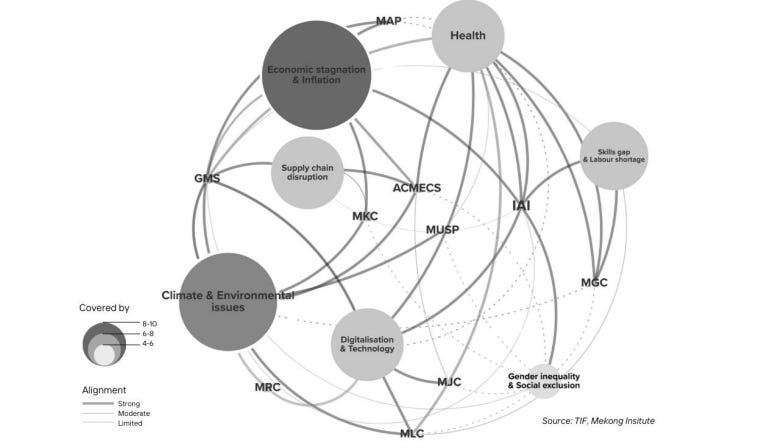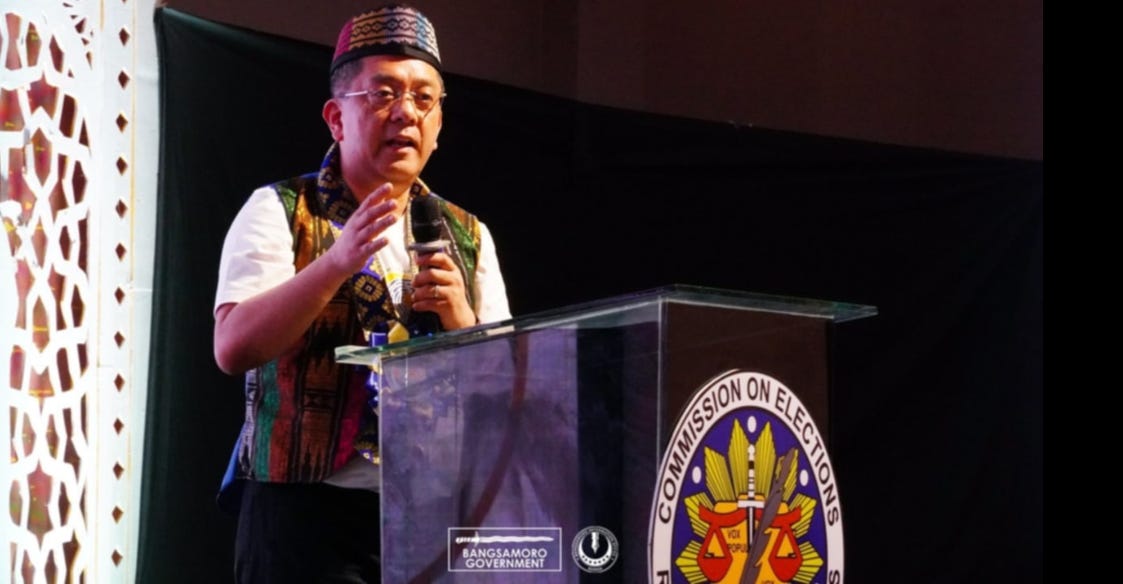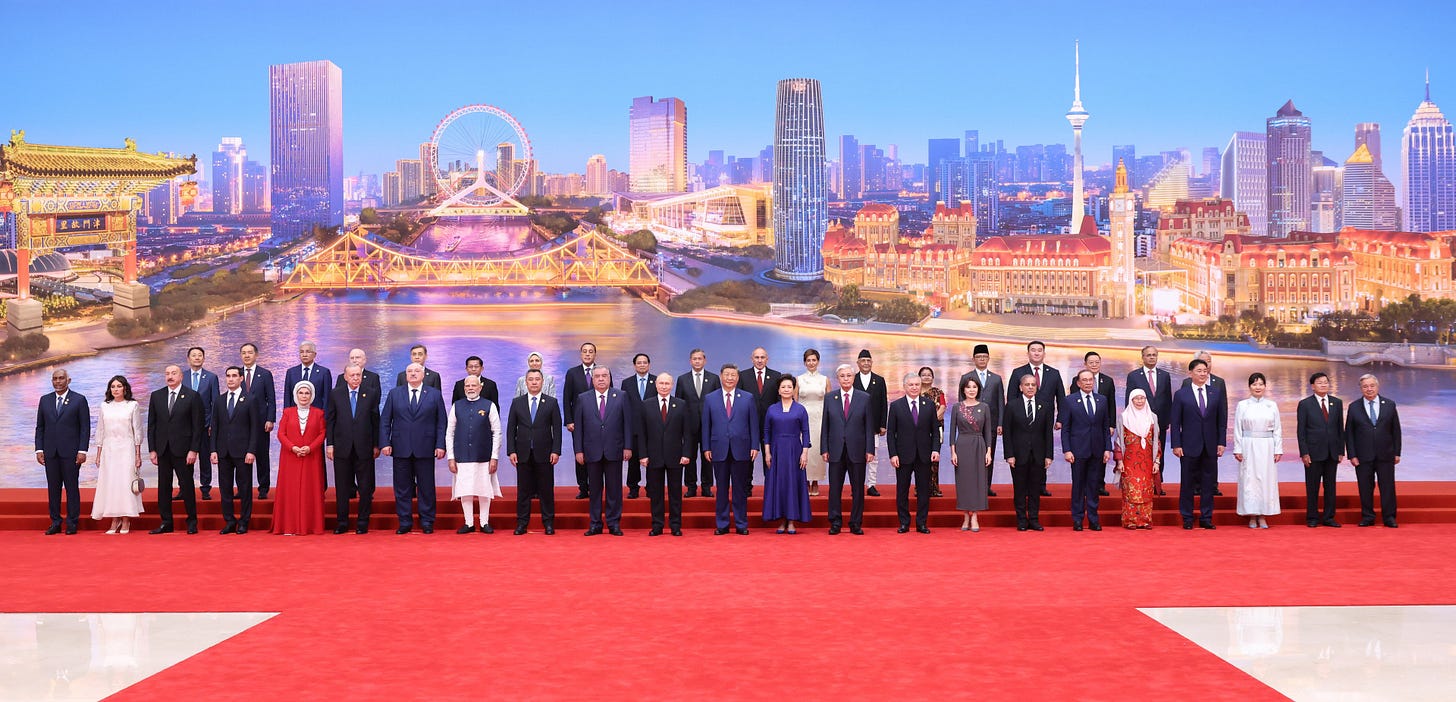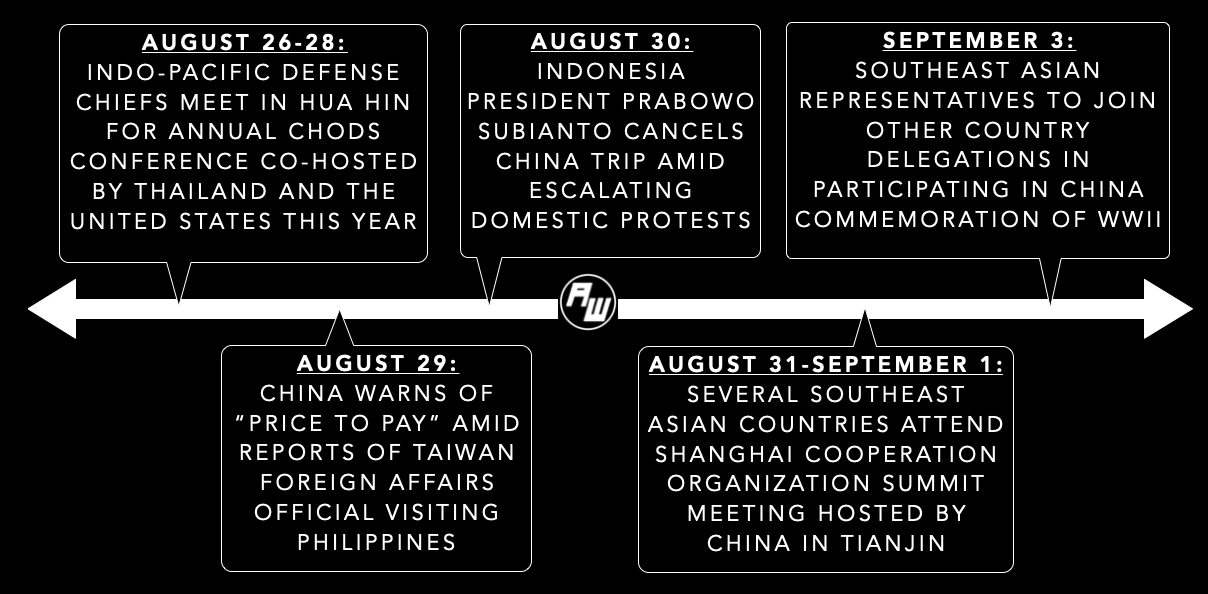Taiwan Drama Rocks Philippines Amid SCO Tianjin China Summit
Plus new submarine deal; big critical mineral pact; twin investment treaties; quiet artificial intelligence win; identification system push and much, much more.
Greetings to new readers and welcome all to the latest edition of the weekly ASEAN Wonk BulletBrief! If you haven’t already, you can upgrade to a paid subscription for $5 a month/$50 a year below to receive full posts by inserting your email address and then selecting an annual or monthly option. You can visit this page for more on pricing for institutions, groups as well as discounts. For current paid subscribers, please make sure you’re hitting the “view entire message” prompt if it comes up at the end of a post to see the full version.
For this iteration of ASEAN Wonk BulletBrief, we are looking at:
Assessing the geopolitical significance of China’s convening of a Shanghai Cooperation Organization summit and commemorative activities and implications for Southeast Asia and the wider Indo-Pacific;
Mapping of regional developments, including a new submarine pact and Indo-Pacific defense chiefs meet;
Charting evolving geopolitical, geoeconomic and security trends such as big critical minerals deal; new artificial intelligence win; & twin investment pacts;
Tracking and analysis of industry developments and quantitative indicators including new foreign influence law; coming identification system; giant clean energy kickoff and more;
And much more! ICYMI, check out our ASEAN Wonk review of a new book by twin practitioners that sheds light on the future direction of Japan cooperation with Southeast Asia and the wider Indo-Pacific region.
This Week’s WonkCount: 2,236 words (~10 minutes)
New Submarine Pact; Indo-Pacific Defense Chiefs Meet & More
Borderland Links; Subregional Futures & Shifting Local Realities
“Yunnan’s external engagement is dominated by Vietnam followed by Laos and Myanmar…Guangxi also prioritizes Vietnam and other Southeast Asian countries,” according to a new publication in an ongoing series on China’s borderlands published by the National Bureau of Asian Research. The publication includes displays of lines of cross-border engagement as well as quantitative tracking of their ongoing evolution (link).
Graphical Depiction of Lines of Cross-Border Engagement Including with Southeast Asia
"The Mekong region faces persistent inequalities in income, education, and digital access,” according to a new report on the Mekong subregion released by the Mekong Institute funded by the British government. The report examines the long list of challenges facing the subregion, including disruptions in supply chains, the rapid rise of artificial intelligence and new technologies, shortages of skilled workers and increasing inequality and social exclusion (link).
Depiction of Mekong Subregional Framework Mapping in Response to Global Challenges
“What was intended as a transition to parliamentary democracy has degenerated into factional squabbles, cynical postponements, and the circus of Malacañang reshuffling the deck to suit its own ends,” argues a new Rappler commentary on the electoral and peace process in the southern Philippines. The commentary notes that there should be no surprise if peace collapses since “the warning signs are flashing already.” (link)
Taiwan Drama Rocks Philippines Amid SCO Tianjin China Summit
What’s Behind It
Representatives from the vast majority of Southeast Asian states began descending in China amid convening of the Shanghai Cooperation Organization (SCO) summit and commemorative activities tied to the Second World War1. The engagements have been closely watched given the presence of several prominent world leaders, including India’s Narendra Modi and Russia’s Vladimir Putin. On the Southeast Asia front, one regional official noted to ASEAN Wonk that China’s publicization of what was perceived as “tiered” levels of high regional attendance obscured factors such as unique proximity of the two separate engagements convened by Beijing — including a broader “SCO Plus” engagement with invitations targeted at individual ASEAN states not unlike past efforts with institutions like the BRICS — historical sensitivities for countries related to the nature of the commemorations as well as the differing cadence in individual bilateral ties2. Engagements were also affected by some last-minute changes, with the most prominent case in point being Indonesia President Prabowo Subianto’s cancelation amid escalating domestic protests3.
Key Recent Developments Around Shanghai Cooperation Organization Tianjin Summit and China World War II-Related Commemorative Activities
China unsurprisingly played up the twin engagements as part of its wider Global South credentials, though this effort was not without its challenges. China’s narrative around the engagements was focused around tying both the summit and commemorations around the theme of the Global South being a new “awakening” similar to WWII’s impact on national independence and liberation4. A number of notable pacts were also signed with countries on the sidelines that did not make the headlines, including in areas like maritime safety5. Yet Beijing’s responses to some ongoing developments complicated inroads it was making. For instance, just ahead of the SCO summit, headlines were focused around China’s heated response to a Taiwan exchange to the Philippines — which one official noted had been signaled earlier this year — with the threat of “a price to pay for trampling on China’s red line” taking the focus off of the response of the engagement within the Philippine political system and onto Chinese coercion6.
Why It Matters
The developments also pointed to datapoints to watch across key areas with regional and global implications (see originally generated ASEAN Wonk table below on notable areas to monitor and additional specifics. Paying subscribers can read on for more on what to expect and future implications in the rest of the “Why It Matters” and “Where It’s Headed” sections, along with paid-only sections of the newsletter as usual).












